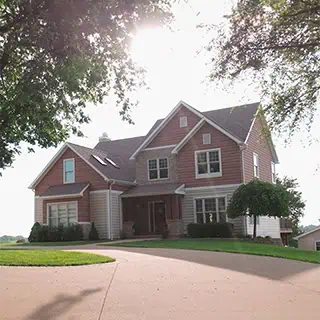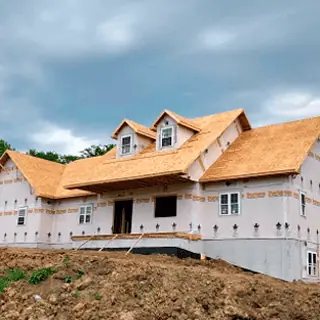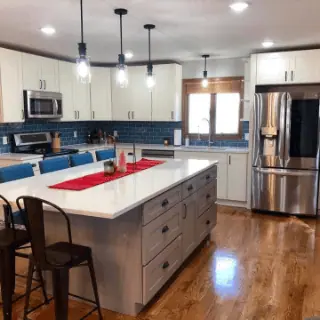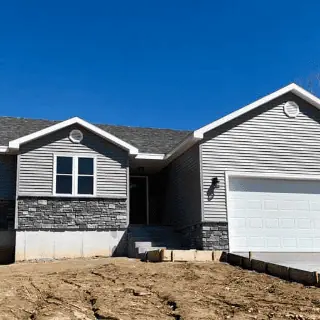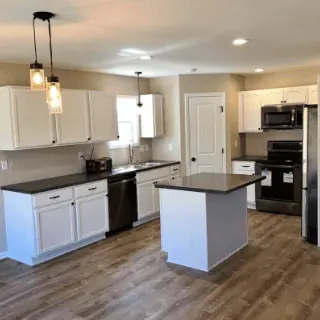Delving into roofing essentials, I learned not all shelters are equal for home safety. Understanding roofing basics is crucial for homeowners wanting to protect their home well. About 60% of a new roof’s cost is labor1, showing the importance of knowing roofing construction, materials, and installation. It’s not just about tips—it’s a financial plan. I aim to give you the knowledge for a long-lasting roof, whether it’s about repairs, choosing materials, or the latest technology.
Key Takeaways
- Discern the importance of labor costs in your roofing investment1.
- Choose roofing materials that balance affordability with durability12.
- Identify why professional roofers are crucial for your roof’s longevity1.
- Learn which roofing technique aligns with your home’s needs1.
- Grasp how roof maintenance can prevent costly future repairs1.
- Consider the benefits and lifespans of diverse roofing materials32.
- Explore innovative roofing technologies that can enhance home efficiency2.
The Critical Role of Roof Structure and Slope
A good roof is vital for a building’s strength. The slope and structure of the roof are key. They help buildings stay dry, which is important for their health and use. Let’s explore why the slope and structure matter, look into different roof shapes, and talk about rafters and trusses. These parts are crucial for any roof.
Importance of Roof Slope in Water Shedding
The slope of a roof is crucial for keeping water away. If the slope isn’t right, water can gather and cause big problems4. On big buildings, like malls or schools, the slope must be just right to avoid water pools. This needs at least a 1/4″ slope for every foot. It makes sure the roof stays strong and the warranty is good5.
Understanding Roof Shapes and Their Functions
Roofs come in many shapes, and each has a special job. Some roofs are flat to give more space. Others have a peak, like A-frames, to help shed water and snow well4. The materials used, like glass or metal, not only look good but also work well in different weathers. They help roofs do their job in keeping water away4.
Framing Components: Rafters vs. Trusses
When building a roof, choosing between rafters and trusses is important. This depends on the roof’s needs and what it must hold up. Woods, metals, and even bamboo are used for strong support4. Rafters give design freedom. Trusses are great for saving money and providing reliable support. A well-built roof uses many parts to stay strong and last long5.
| Roof Component | Function | Materials Used | Lifespan Indicators |
|---|---|---|---|
| Slope | Water shedding | Asphalt, Coal tar pitch | 1/4″ per foot minimum for warranty5 |
| Shape | Spatial utility, environmental response | Seagrass, Copper, Aluminum sheeting | Varies with material and design4 |
| Rafters/Trusses | Structural support | Timber, Steel, Bamboo | Dependent on design and maintenance4 |
In the end, making a great roof means picking the right slope, strong frames, and the best materials. This not only protects the building but also shows we care about building well.
Basics of Roofing: Materials and Lifespan
Choosing roofing materials matters for both a home’s look and its structure. The roof lifespan is key, making material durability important. Flat roofs last 15 to 20 years6. Metal and slate roofs, however, can last more than 50 years67.
Asphalt shingles are a favorite, lasting about 25 to 30 years67. They’re loved for durability, easy installation, and lots of color options7. Cedar shakes match asphalt’s lifespan, adding a classic look67.
Roofing materials affect both a roof’s life and home costs. Metal or slate costs more upfront but lasts longer and needs less upkeep6. Cold areas require materials that can fight off ice dam damage6.
Solar panels, often lasting 20 to 30 years, should sit on durable roofs6. Saving 10% of a budget for unexpected roofing costs is wise6.
For over 30 years, I’ve learned roofers play a crucial role8. They skillfully manage installations and prevent small problems from growing, helping roofs last7.
Good ventilation keeps a roof healthy, with many vent types available8. Proper install and regular upkeep like inspections and cleanings are vital7.
Synthetic roofing is light, durable, and green. It looks like cedar or slate but is cheaper, appealing to eco-friendly homeowners7.
Common Roofing Challenges and Their Solutions
As a homeowner, I’ve faced roofing problems too. Things like roof leaks, moss, and algae growth can harm our roofs. They can also lead to costly roof repairs if we don’t act quickly and the right way.
Identifying and Repairing Leak-Prone Areas
Leak-prone areas, like valleys and intersections, often show signs through wet spots or ceiling stains9. In winter, ice dams at the roof’s edge can cause leaks10. To fix these areas, we need to look beyond just patching. We must understand and fix the root problems, like not enough insulation or poor attic venting that causes too much heat10. It’s also important to clean gutters and check them regularly to stop water damage9.
Zinc Flashing as a Solution to Moss and Algae
I often say zinc flashing is a great way to fight moss and algae on roofs. Zinc naturally stops these organisms from growing. While you can use Moss and Algae Cleaner or a bleach solution, adding zinc flashing is a more lasting fix9.
Dealing with Shingle Wear and Tear
Shingles can get damaged in many ways, like curling or even breaking. Bad roofing materials or not-so-good installation usually mean roofs won’t last long10. Doing regular upkeep, like replacing damaged shingles, can make our roofs last longer9. Also, since moss can cause leaks and damage, it’s crucial to handle it quickly9.
| Challenge | Potential Cause | Recommended Solution |
|---|---|---|
| Roof Leaks | Weather damage, ice dams, faulty materials910 | Regular inspections, quality repair materials |
| Moss and Algae | Moist environments, shade9 | Zinc flashing, cleaning agents |
| Shingle Wear and Tear | Age, poor installation, environmental factors10 | Maintenance, shingle replacement9 |
In the end, tackling roofing challenges like leaks, moss and algae, and shingle damage with smart, early actions saves our roofs. This saves us stress and money over time.
Roof Installation: Underlayment to Shingles
As a roofing expert, I know a great roof setup makes your home safe and dry. It starts with putting down underlayment right. Then, it ends with shingles that block rain and wind. Together, they keep your home safe.
Underlayment comes in two types, #15 basic and stronger #30 heavy felt. Atlas Roofing’s options meet certain standards11. New tech leads to synthetic underlayment like Atlas Roofing’s Summit®. It’s lighter yet stronger than #30 felt11.
Synthetic underlayment stands up to UV rays and bad weather. It can be left out for six months before adding asphalt shingles. It’s better at keeping water out than felt11. Also, it meets high standards, showing it’s top-notch11.
| Underlayment Type | Weight Comparison | Strength Comparison | ASTM Standard Compliance | Max UV Exposure Time |
|---|---|---|---|---|
| #30 Felt | Heavier | Standard | D4869, D226 | Limited |
| Synthetic (Summit®) | 6x Lighter11 | 3x Stronger11 | D6757, Exceeds D4869 & D22611 | Up to 6 months11 |
Good roofers know mixing top underlayment with skilled shingle work is key. It makes your roof super strong against weather. Think about using these awesome materials and ways for your roof.
Rethinking Roofing Technology for Efficiency
Exploring modern construction reveals major changes in roofing technology and its link to eco-friendliness. Now, solar panels are common on roofs, showing a commitment to sustainable living. Innovations like metal roofs, EPDM, and solar reflective coatings are making roofs key players in energy management.
Metal Roofing Innovations
Metal roofs can last up to 50 years12, making them a smart choice in places like Spartanburg. Here, roofs face many days of diverse weather each year12. Thanks to high-tech cameras and drones, checking these roofs has become easier and cheaper13.
Sustainable Options: EPDM and Solar Reflective Coatings
Roofs used to worsen the urban heat island effect, but not anymore. Solar reflective coatings keep buildings cooler in summer14. Combined with EPDM, they offer an eco-friendly option for homeowners who care about the planet14.
Integrating Solar Panels with Roofing Systems
Adding solar panels to roofs is a big step towards buildings that sustain themselves. Smart roofs react to weather and help regulate temperature inside14. They do more than just generate power. They create smart, eco-friendly environments13. Green roofs add to this by improving air and regulating warmth, pushing forward the blend of tech and sustainability14.
“The roofing industry has shifted from mere construction to an era of smart, sustainable, and energy-efficient solutions that not only protect our homes but also cater to our planet.”
Adopting these roofing innovations helps me enhance homes and support eco and economic goals in the industry14. From metal to green and solar roofs, this field looks promising and full of potential.
| Technology | Benefits | Lifespan |
|---|---|---|
| Metal Roofing | Energy Efficiency | Up to 50 years12 |
| EPDM | Heat Resistance | Long-lasting |
| Solar Reflective Coatings | Reduces Urban Heat Islands | Extends Roof Life |
| Solar Panels | Renewable Energy Generation | Varies by Type |
| Green Roofs | Improves Air Quality and Insulation | Contributes to Biodiversity14 |
Maintaining Your Roof for Long-Term Performance
As a homeowner, taking care of my roof is very important to me. It keeps my home safe and lasts longer. I make sure to get it checked and clean the gutters regularly. This is because I know taking good care of my roof is a must. It helps it stay strong for a long time15.
Not taking care of your roof properly can cause big problems. Problems like leaks, damage, and even roofs failing too soon15. That’s why I always do things like cutting back trees and making sure my attic is well-ventilated. Cleaning my roof helps stop moss and algae from damaging it16.
I use new technology to help me take care of my roof. Tools like infrared imagers and drones help me see how my roof is doing. This information helps me decide what my roof needs15.
I also know that weather affects my roof a lot, especially in places with lots of storms. Using protective layers can stop leaks and save money in the long run. Putting these on my roof costs a bit more at first. But it saves money by preventing damage. This typically costs between $700 and $1,200 for a medium-sized home16.
It’s smart to have experts install your roof to avoid any big mistakes16. Regularly checking your roof, especially certain types, helps avoid costly repairs later. This keeps your roof in good shape and saves money15.
Taking care of your roof is essential, no matter what type it is. It’s not just about making it look good, but keeping it strong and working right. If we ignore taking care of our roofs, it could lead to serious problems. These problems could have been prevented with proper care16.
Conclusion
Our roofing guide shows that a good roof starts with the basics. These basics help our homes last longer and stay strong. If your roof is over 20 years old or has sagging spots, it’s time for a fix17. Fixing or replacing it on time is key. This protects our investment and makes our homes look and work better. It also boosts our home’s value and the roof’s life.
In Greensboro, NC, strong and well-installed roofs are known to last. People like metal roofs for their toughness over the years17. But getting a new roof is just the start. Taking care of it is just as important. Proper care stops problems before they start. It also keeps up with new and better roofing ways, making roofs last longer and work better.
Choosing to get a new roof is a big but smart choice, especially in places with weather like Greensboro’s17. There are many roofing materials to pick from. You could go cheap with asphalt shingles or eco-friendly with green roofs. Each choice has its own costs and benefits, fit for different budgets and tastes18. Looking back on what we’ve learned about roofing, making smart choices and taking good care of your roof means having a safe and peaceful home.
FAQ
What are the basics of roofing?
The basics of roofing include understanding the structure and slope of a roof. You also need to choose the right materials. It’s important to tackle common roofing problems. Knowing how to properly install a roof is crucial. Keeping up with new roofing tech and doing regular maintenance is essential too.
How does roof structure and slope affect a roof’s performance?
The structure and slope of a roof are very important. They help stop leaks by making sure water runs off quickly. The slope handles the water flow, and the structure supports the entire roof.
What are the different roof shapes and their functions?
Roof shapes each serve a different purpose. Flat roofs are great for creating extra usable space. A-framed gabled roofs work well for getting rid of water and snow. There are also hipped, gambrel, and mansard roofs. Each type has its own special benefits and features.
What are the framing components of a roof?
Rafters and trusses are the main parts of roof framing. Rafters are the sloped beams that make up the roof’s structure. Trusses are frames made in advance that give the roof strength and stability.
What are the different roofing materials available?
There are many choices for roofing materials. You can pick from asphalt shingles, metal, slate, cedar, and tile. Each option has its good and bad points, including cost, look, and how long they last. Think about the weather in your area and how your home looks when choosing.
How can I address common roofing challenges?
To solve common roofing issues, find and fix leaky spots. Using zinc flashing can help stop moss and algae. Regular maintenance and quick repairs are key to deal with shingle problems.
What are the steps involved in roof installation?
Installing a roof starts with putting down an underlayment for moisture protection. Then, you add your chosen roofing material, like shingles. There are different underlayments and shingles, each with special benefits and ways to install them.
What advancements are there in roofing technology?
Roofing technology keeps getting better. We now have durable and efficient metal roofing. There are also EPDM and reflective coatings for green options. Solar panels can even be combined with roofs to create energy.
How can I maintain my roof for long-term performance?
Keeping your roof in good shape requires regular check-ups. Make sure to clean the gutters and clear off any debris. Fix problems quickly and take steps to prevent damage. This includes trimming nearby trees and making sure the roof is well-ventilated.
Source Links
- https://www.architecturaldigest.com/reviews/roofing/how-to-roof-a-house
- https://www.forbes.com/home-improvement/roofing/types-of-roofing-materials/
- https://www.thespruce.com/basic-types-and-cost-of-roofing-materials-1822016
- https://en.wikipedia.org/wiki/Roof
- https://www.wbdg.org/guides-specifications/building-envelope-design-guide/roofing-systems
- https://www.thisoldhouse.com/roofing/21072549/all-about-roofing
- https://roofingworldal.com/blog/introduction-to-roofing-basics-a-comprehensive-guide/
- https://www.billraganroofing.com/blog/roofing-101-components-materials-make-up-roof
- https://www.thisoldhouse.com/roofing/22555882/common-roof-problems-and-how-to-fix-them
- https://www.angi.com/articles/5-most-common-roofing-problems.htm
- https://www.atlasroofing.com/asphalt-life/understanding-traditional-felt-and-synthetic-roof-underlayment
- https://www.re-thinkingthefuture.com/technologies/gp1114-comparing-roofing-materials-advice-from-roofers-in-spartanburg/
- https://fabulousroofing.com/innovations-in-roofing-materials-and-techniques/
- https://www.srsexteriors.com/blog/innovative-roofing-solutions-for-residential-and-commercial-properties
- https://www.facilitiesnet.com/roofing/article/5-Keys-to-Healthy-Roofs–17769
- https://www.consumerreports.org/roofing/ways-to-help-a-roof-last-longer/
- https://wxtite.com/2024/01/25/what-are-signs-you-need-a-new-roof-expert-insights-from-greensboros-leading-roofing-contractor/
- https://www.nationwide.com/lc/resources/home/articles/types-of-roofing
